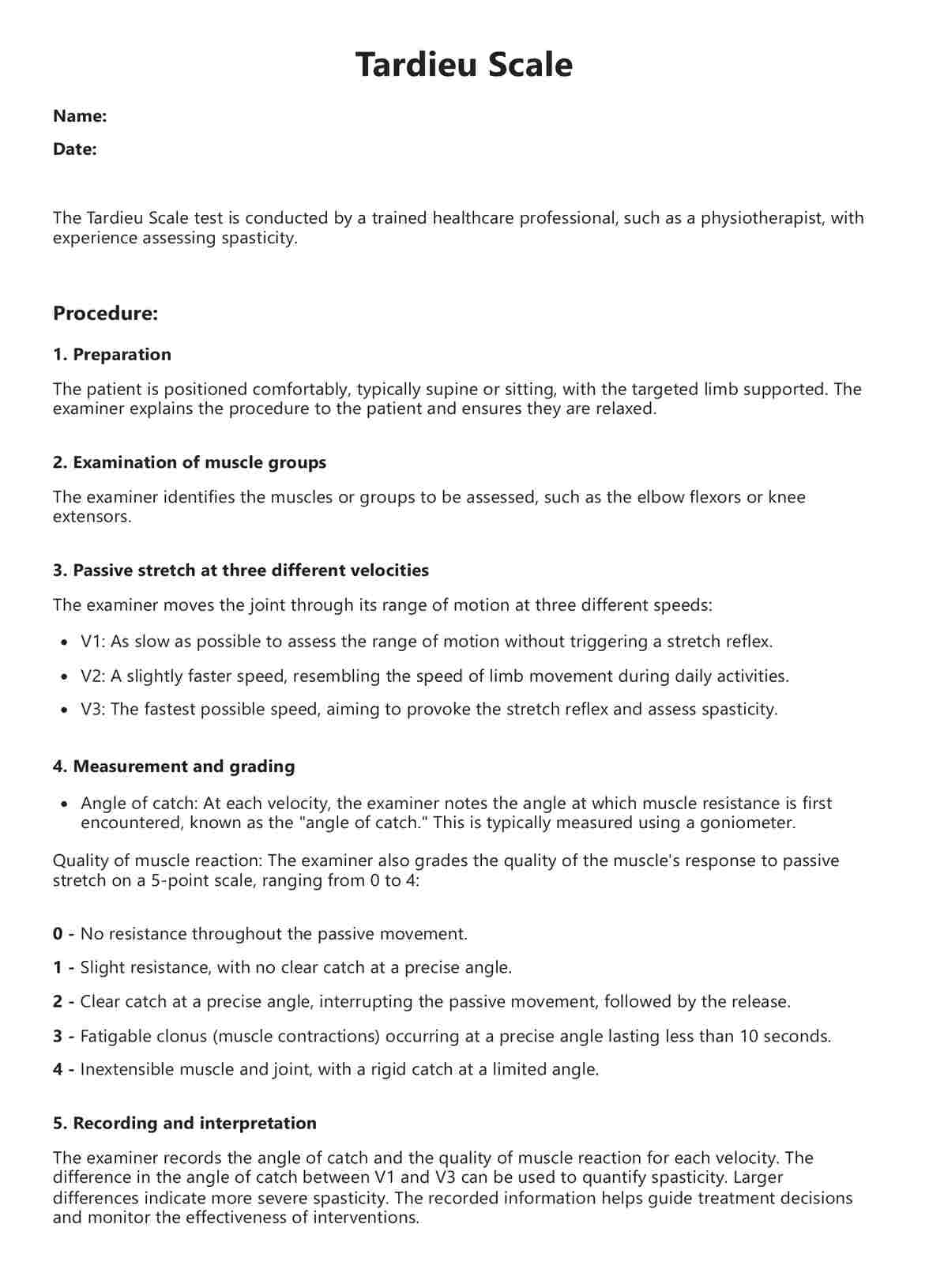The assessment duration varies from five minutes to over thirty, depending on the number of muscle groups measured and the ease of measurement.

Tardieu Scale
Unlock insights into muscle spasticity with the Tardieu Scale. Optimize care today with this essential medical tool.
Tardieu Scale Template
Commonly asked questions
Interpreting the Tardieu Scale involves considering both the catch angle and the muscle reaction quality. A more significant difference in the catch angle between the slowest and fastest velocities indicates more severe spasticity. The quality of muscle reaction is graded on a 5-point scale, which also helps determine the severity of spasticity and guide treatment decisions.
The Tardieu Scale measures spasticity in individuals with neurological conditions by assessing the angle of muscle resistance to passive stretch at various velocities and grading the muscle's response to stretch on a 5-point scale. It provides valuable information on spasticity severity and helps guide treatment decisions.
EHR and practice management software
Get started for free
*No credit card required
Free
$0/usd
Unlimited clients
Telehealth
1GB of storage
Client portal text
Automated billing and online payments











